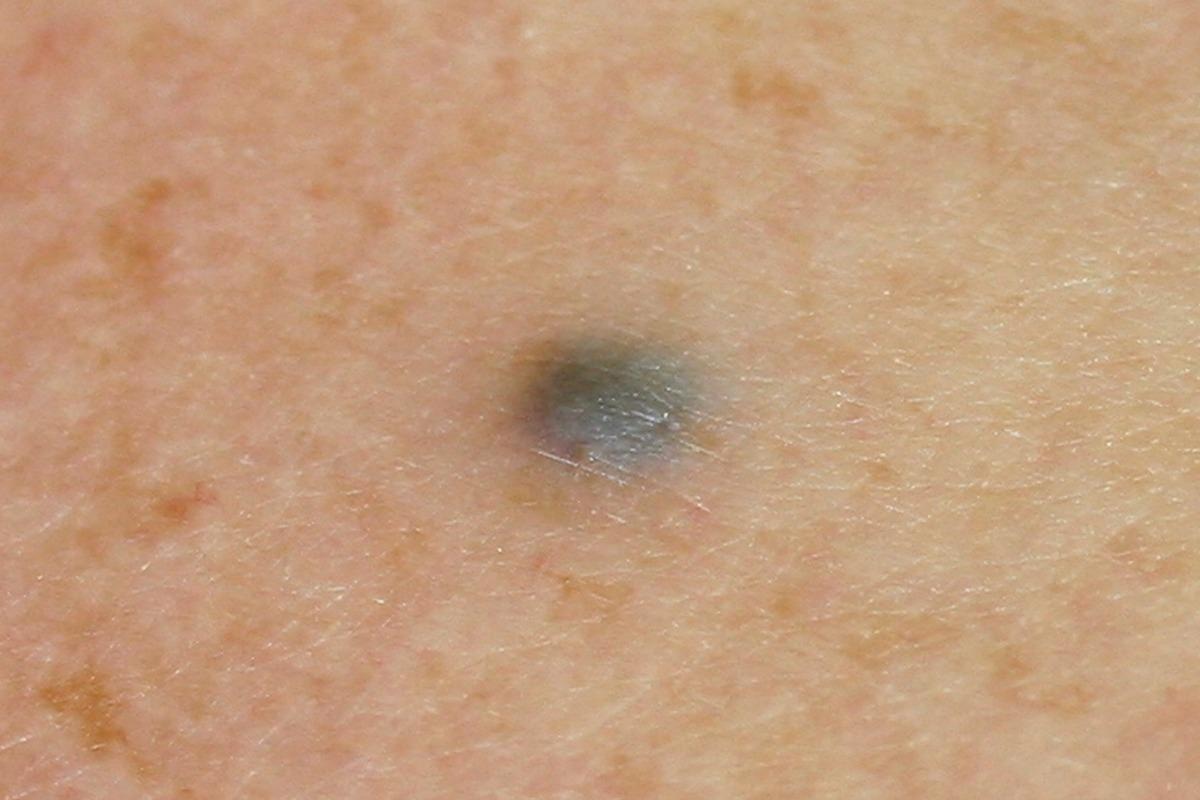Have you ever bumped into a table or fallen and watched in dismay as a colorful mark blooms on your skin? That purplish-blue discoloration is a bruise, a familiar and sometimes unwelcome reminder of our everyday clumsiness. But have you ever wondered why bruises turn blue? What’s going on beneath the surface that makes our skin change color?

Image: familymednews.com
The answer, as it often is in the human body, is complex and fascinating. It’s a tale of broken blood vessels, blood cells, and the remarkable way our body responds to injury. Understanding the science behind bruise formation and the color variations can help us appreciate the resilience of our bodies and understand the natural healing process.
A Deep Dive into the Bruised Body: Understanding the Science
A bruise, more formally known as a contusion, is the result of a blunt force injury. This force causes tiny blood vessels beneath the skin, called capillaries, to rupture. The escaping blood pools in the surrounding tissues, creating a visible discoloration. But why does this blood look blue?
The color of a bruise is determined by a unique combination of factors: the type of blood cells involved, the way light interacts with them, and the natural healing process.
The Players in the Bruising Game: Red Blood Cells and Hemoglobin
The primary culprit behind the blue hue of a bruise is hemoglobin, the iron-containing protein found in red blood cells. Hemoglobin is responsible for transporting oxygen throughout the body, and its unique molecular structure gives blood its characteristic red color.
When blood leaves the damaged capillaries, it carries with it a healthy dose of hemoglobin. However, the escaped blood is no longer contained within the smooth, clear-walled vessels. Instead, it gathers in the surrounding tissues, creating a larger, more visible pool.
From Red to Blue: The Color Transformation
So, how does blood, typically red, transform into the blue-purple of a bruise? The blue hue of a bruise is not due to the actual color of the escaped blood, but rather the way light interacts with hemoglobin when it’s trapped within tissues.
Our skin is relatively translucent, allowing some light to pass through it. When white light (containing all colors of the rainbow) shines on a bruise, the hemoglobin absorbs the red wavelengths and reflects the remaining wavelengths, creating a bluish-purple appearance.

Image: www.livestrong.com
The Changing Colors of a Bruise: A Timelapse of Healing
Bruises are dynamic, constantly changing their appearance as the body heals. Here’s the chronological breakdown of bruise colors:
- Deep Purple/Black: This initial stage reflects the immediate pooling of blood under the skin.
- Greenish-Blue: As the hemoglobin breaks down and changes form, the blue hues soften and shift towards green.
- Yellowish-Brown: The body begins to reabsorb the escaped blood, and the bruise fades to a pale yellowish-brown.
- Faint Tan: The final stage of healing, the bruise fades to an almost imperceptible tan hue before disappearing entirely.
Factors Influencing Bruise Color: Beyond the Basics
While the process of bruise color change is largely predictable, the specific color and how long it lasts can vary based on several factors:
- Injury Severity: The more force behind the injury, the larger the blood pool, leading to a more intense and potentially longer-lasting bruise.
- Location: Bruises on certain areas of the body, like the face and shins, tend to be more prominent and visible.
- Underlying Health Conditions: People with certain medical conditions, such as blood clotting disorders, may bruise more easily and experience prolonged discoloration.
- Age: The skin’s ability to heal can decline with age, making bruises more noticeable and potentially lasting longer.
Expert Insights and Actionable Tips
Understanding the science behind bruising can help you approach these skin changes with less anxiety. Here’s how to manage bruises and promote healing:
- ICE, Compression, and Elevation: Immediately following an injury, apply ice to the area for 15-20 minutes to reduce bleeding and inflammation.
- Over-the-Counter Medications: Pain relievers like ibuprofen can help manage pain and reduce swelling.
- Time and Patience: Bruises typically resolve on their own within a few weeks. Avoid picking at or scratching the bruise, as this can delay healing and potentially lead to scarring.
What Causes A Bruise To Appear Bluish In Color
Conclusion: Embracing the Body’s Remarkable Healing Process
The appearance of a bruise is a natural and transient response to injury. By understanding the processes behind the color changes, we can gain a deeper appreciation for the incredible resilience of our bodies. Bruises, though sometimes unsightly, are a testament to the body’s ability to heal and recover.
If you’re concerned about a bruise that doesn’t fade or if you experience excessive or unusual bruising, it’s essential to consult with a healthcare professional. They can help determine the underlying cause and provide appropriate guidance.

:max_bytes(150000):strip_icc()/OrangeGloEverydayHardwoodFloorCleaner22oz-5a95a4dd04d1cf0037cbd59c.jpeg?w=740&resize=740,414&ssl=1)




